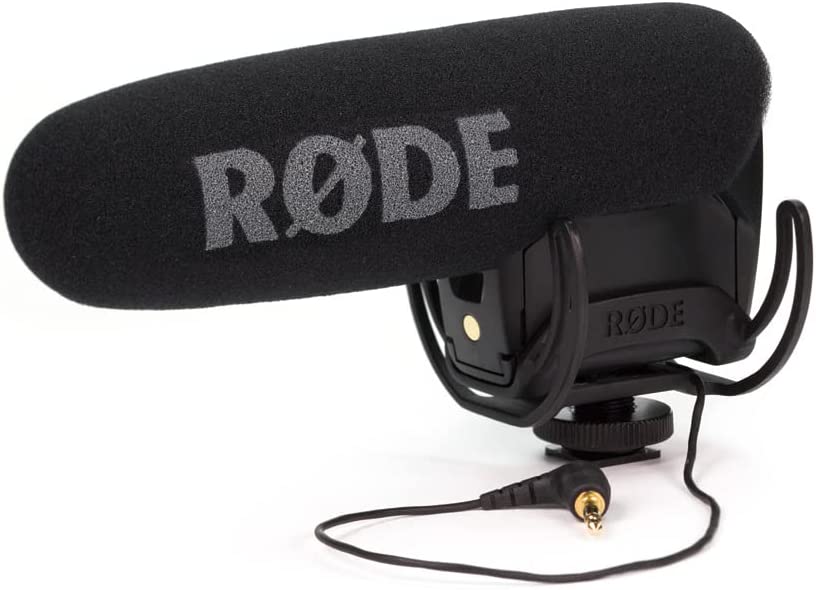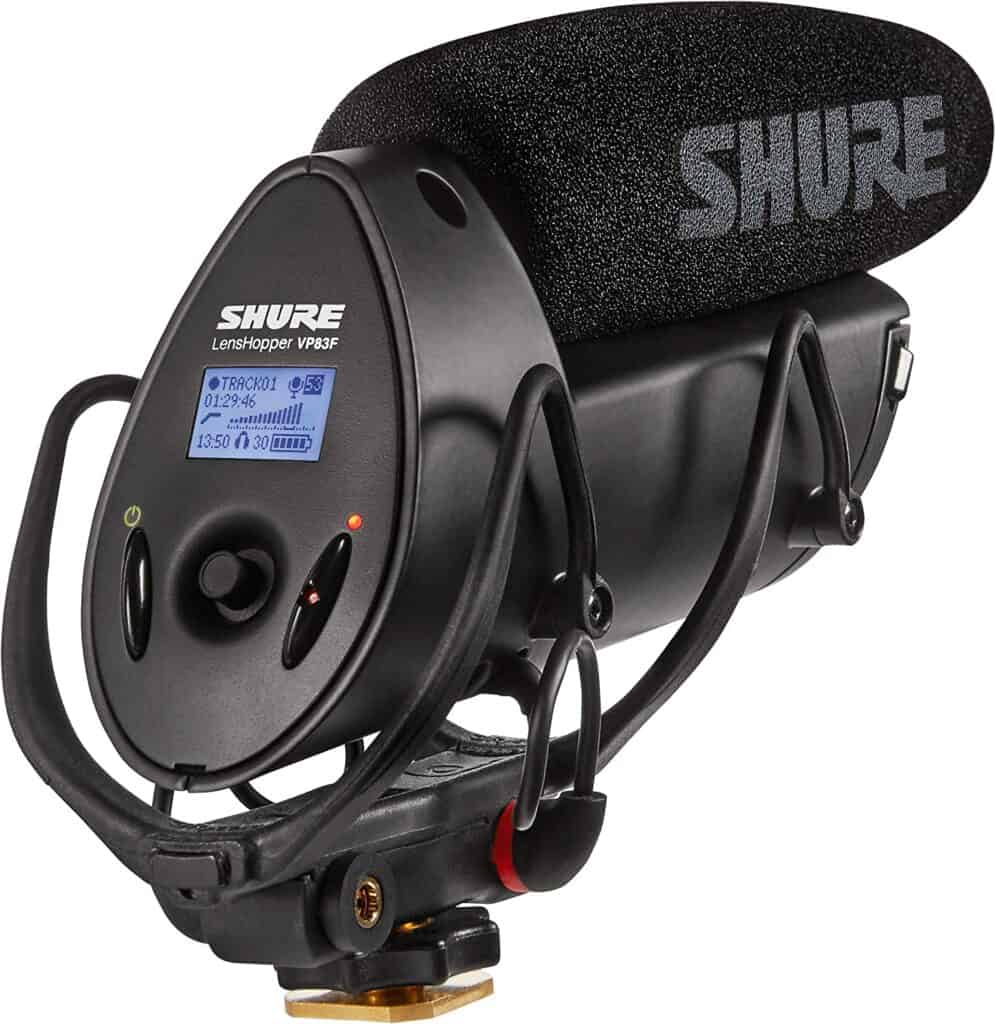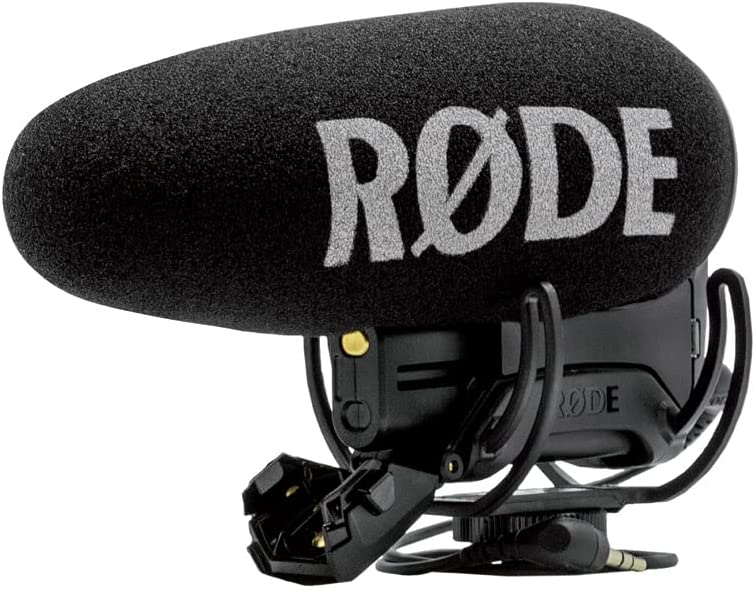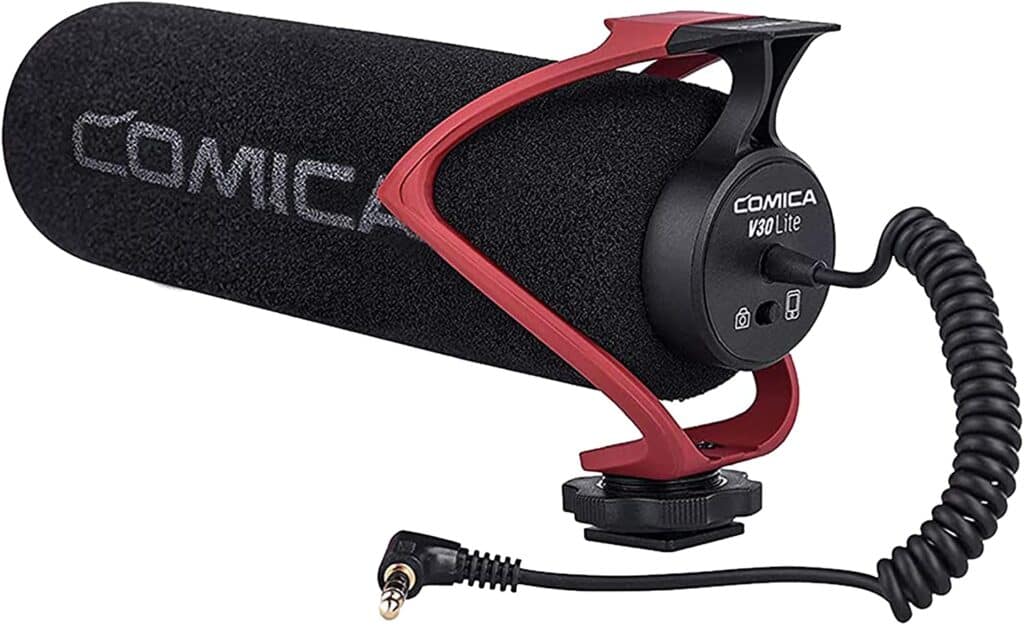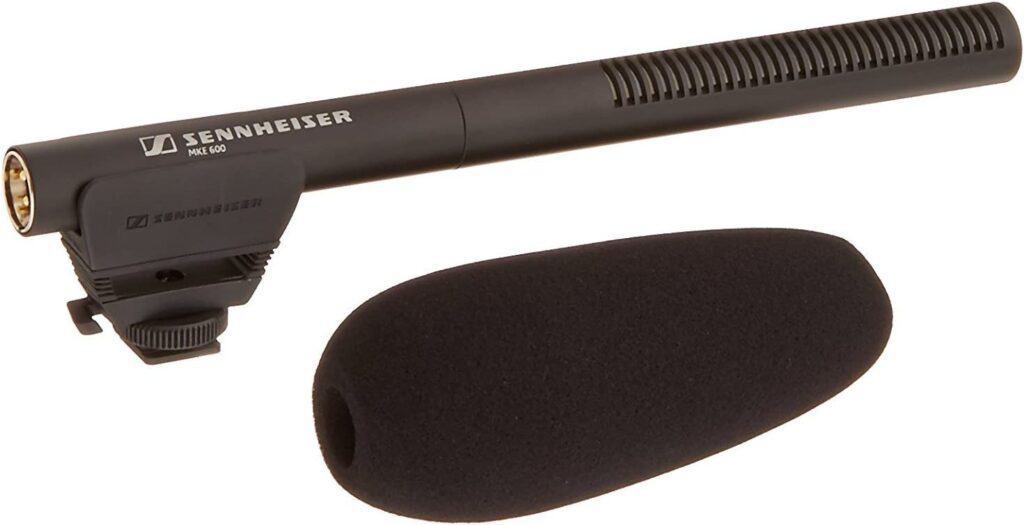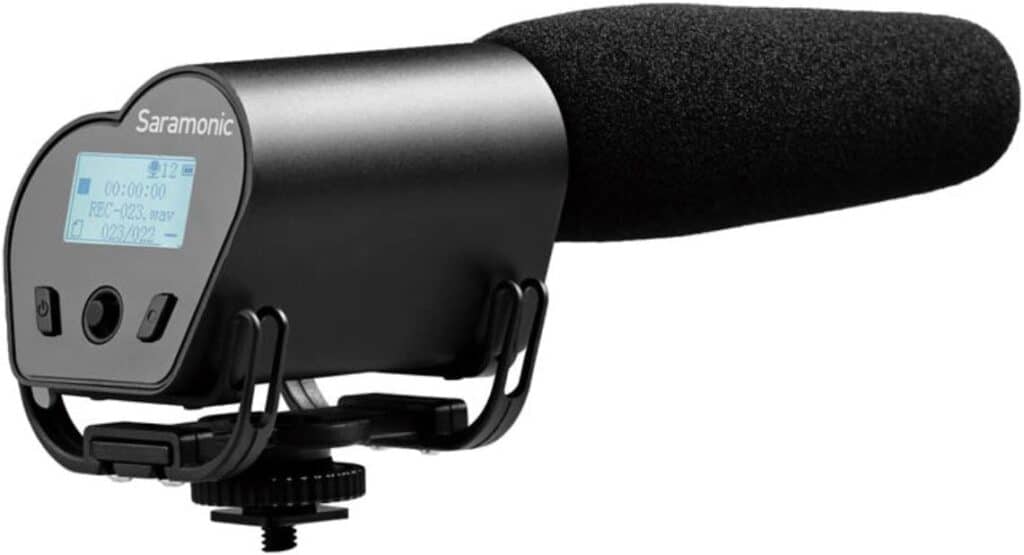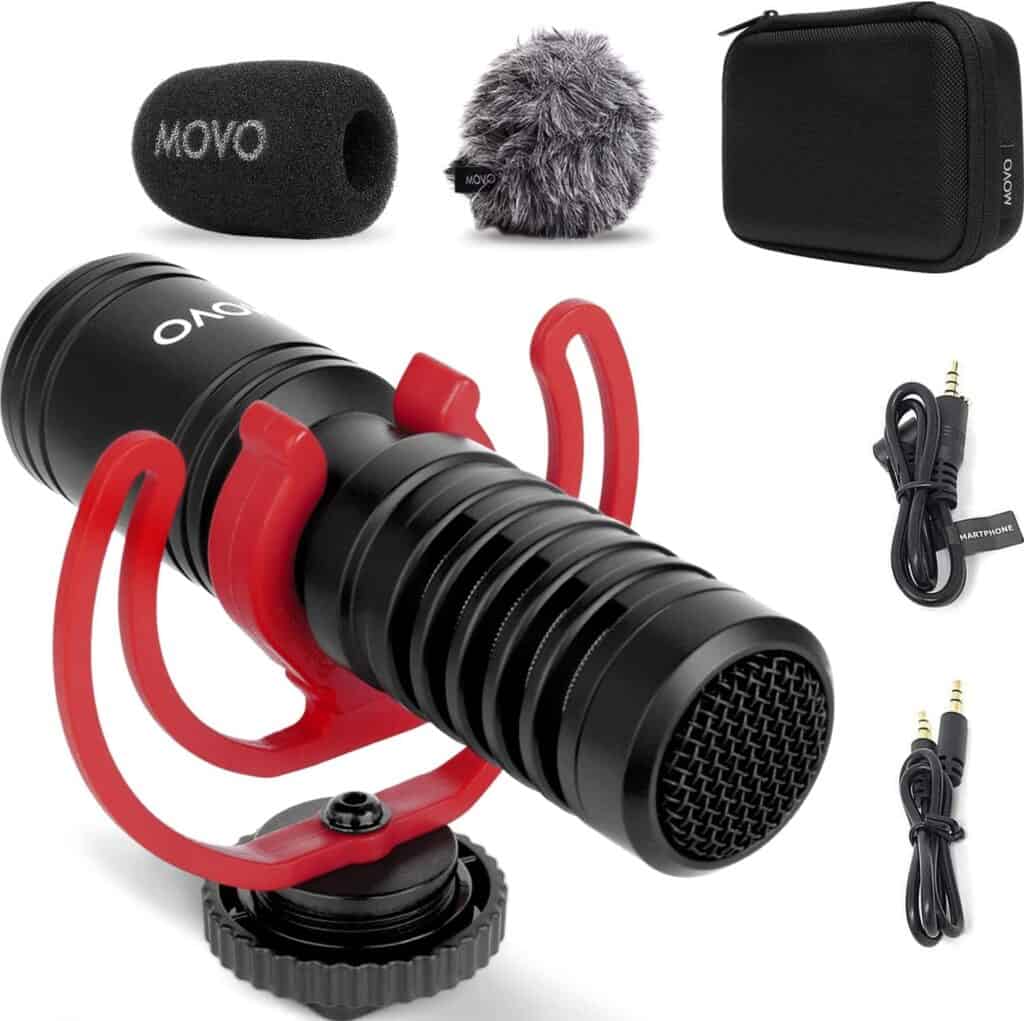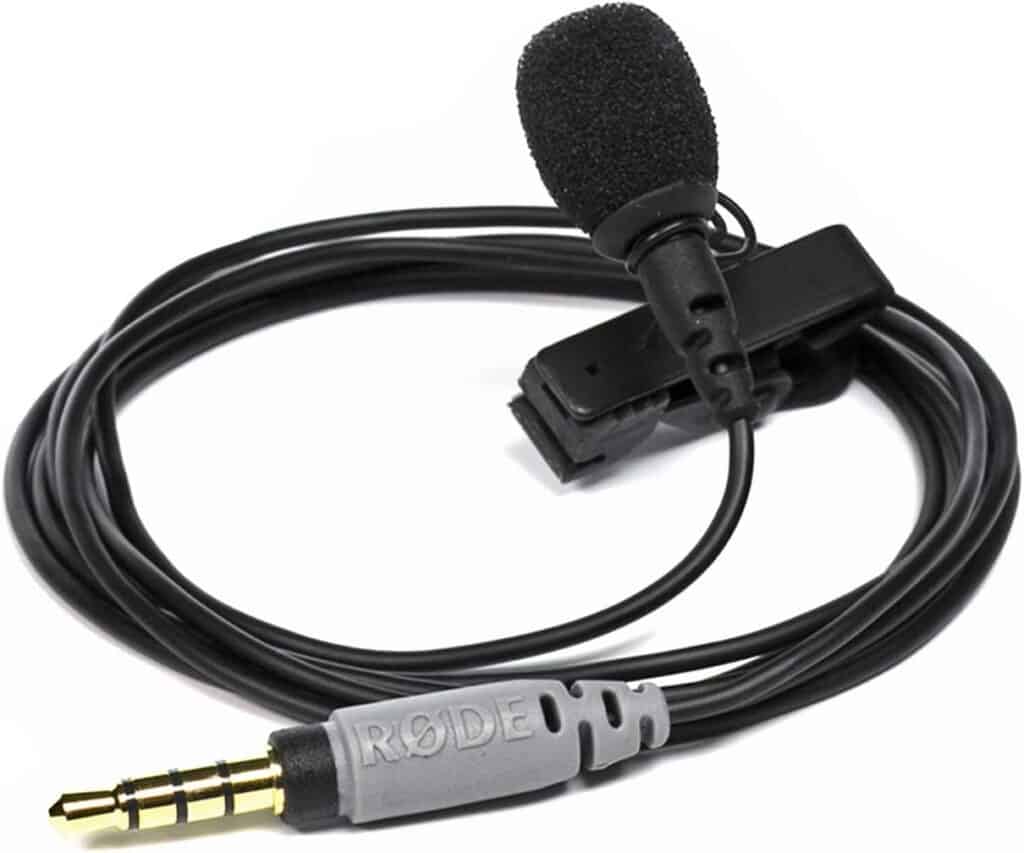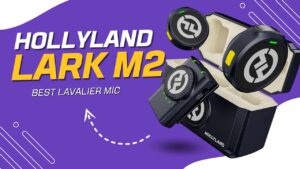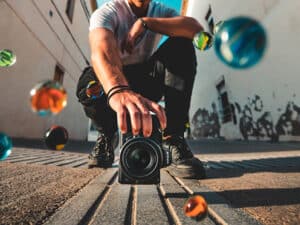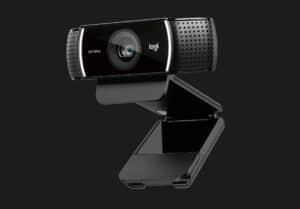Podcasting is never an easy venture, especially video podcasting. Beyond having to worry about whether your content is enthralling, you have to ensure you have the right podcasting equipment. The following article will round up the best DSLR microphones for any budget.
Castos is a participant in the Amazon Services LLC Associates Program. We may earn commissions from your purchases on Amazon.com, though at no cost to you.
Action
Not looking for a DSLR mic? Check out our guides on the best podcasting mics, the best live streaming mics, or our complete podcast equipment guide.
What is a DSLR Microphone?
DSLR stands for “Digital Single-Lens Reflex” and has become a term that’s synonymous with digital cameras. A DSLR microphone is a special type of microphone that is specifically designed to operate seamlessly with camcorders or video-enabled DSLR cameras.
DSLRs have an internal microphone but those microphones often don’t offer the best sound quality, hence the reason why most podcasters eventually seek out an external microphone to use in conjunction with their DSLR camera.
Using a DSLR microphone alongside your camera means that you don’t have to sacrifice high-quality audio for the sake of your camera. Sound recording is automatic whenever you have a DSLR microphone attached to your camera.
Different Types of External Microphones
Before you start wading through our selection of the best DSLR microphones, here’s a quick breakdown of the different types of external mics. This will help you decide on the type that best suits your show and your needs.
1. Lavalier microphones
Lavalier mics are incredibly discrete and are often placed on a speaker’s collar to ensure the best audio quality. Video podcasters are incredibly fond of wireless lavalier microphones as they enable unrestricted movement.
Do note that a lav mic is generally an expensive option, particularly if your podcast episode will have more than one person. Having an extra person means having another recording device.
2. Handheld microphones
This is the closest you’ll get to a traditional microphone. Handheld mics are best suited to podcasters who find it more comfortable to hold the microphone while recording.
The main issue with handheld microphones, in this context, is that they typically require additional attachments to produce quality sound, thus driving up the overall cost of getting and using one. A handheld mic might not be the best option for podcasters who are on a tight budget.
3. Shotgun microphones
Shotgun mics can be mounted directly to a DSLR camera or a boom pole if that’s your preference. This versatile microphone is incredibly popular due to how easy they are to use. In addition to this, shotgun mics are described as “incredibly directional,” as their tubular shape betters their ability to pick up on sound sources.
4. Camera microphones
This is a special kind of on-camera microphone that’s designed to be compatible with a camcorder or video-enabled DSLR camera. They’re generally lightweight and have the ability to be mounted to the shoe of a camera.
5. Video microphones
Video mics are essentially a type of shotgun microphone but generally aren’t for capturing the final audio of a production. They connect straight to the camera to capture scratch-track audio, thus allowing for easy syncing in posts.
The 10 Best DSLR Microphones
Here’s our list of some of the best microphones for DSLR video cameras. Do bear in mind that we’ve selected them based on various criteria, such as audio quality, price, and how good they are at handling noise but, this is something that will, in some regards, be subject to opinion.
All of these microphones can be found on Amazon.
1. Rode Videomic Pro
The Rode Videomic Pro is ideal for digital DSLR cameras. It’s small and light but still has a great deal to offer in terms of functionality.
One of the best parts about this microphone is that it comes with a hot-shoe mount and thus allows for shotgun-style mounting. Given that it weighs a mere 86 grams, the light weight of this mic won’t overwhelm a small video-enabled SLR camera.
The Videomic Pro also has excellent sound quality and does a good job of isolating individual voices, much like the original Videomic Pro but one of its best selling points is its reasonable price tag.
2. Shure VP83F
The Shure VP83F is a super-cardioid condenser microphone system that also functions as a standalone audio recorder which allows direct recording to a flash drive. This microphone comes with up to 60 dB adjustable gain, a high-pass filter, 10 hours of battery life, and a frequency range of 50Hz to 20kHz.
Despite the hefty price tag, other noteworthy features such as a dedicated headphone jack, foam windscreen, and integrated shock mount make this a microphone that is well worth considering.
3. Rode Videomic Pro+
Despite being oversensitive and very much on the pricier side, the Rode Videomic Pro+ is a robust shotgun microphone with a long list of features.
This shotgun mic comes with on-camera and boom-pole mounting, an integrated shock mount, three-stage adjustable gain control, and an automatic power function that turns off the microphone when it’s disconnected. One of the best features of the Videomic Pro+ is that it comes with the option to use AA batteries in the event of the rechargeable battery dying.
It also comes with a foam windshield that is said to do a good job of reducing wind noise.
4. Comica CVM-V30 LITE
The Comica CVM-V30 LITE is one of the best budget microphones on the market. Because it is mainly constructed from plastic (as opposed to a metal construction), it’s quite a lightweight microphone that is generally lighter than most small microphones out there, which makes it great for podcasting on-the-go or vlogging.
It doesn’t require much setting up and starts working as soon as it’s plugged in. To make it even more convenient, it has a built-in cable, so you don’t need a connector or adapter.
Overall it has good sound quality and can be used with both your smartphone and camera, so its versatility makes it an option that shouldn’t be overlooked.
5. Deity D3 Pro
There are many reasons why the Deity D3 Pro is a good DSLR shotgun mic. One of its most noteworthy features is the stepless gain control. For those who don’t understand the importance of gain control, good gain control is useful for counteracting low signal sources bad camera preamps and ultimately achieving the right sound level.
To make it that much more attractive, its rechargeable battery offers around 50 hours of use. The D3 Pro’s output can be adjusted according to what it’s connected to and it boasts both quality audio and a quality build.
6. Sennheiser MKE 600
This is a long shotgun microphone that’s well-built and holds a lot of versatility. It can be powered by one AA battery if connected to a camera or it can extract phantom power via XLR.
It has a hypercardioid pattern and a high-pass filter that does a good job of reducing noise. The sound that you’ll get from this microphone will generally be clear and it comes with a whole host of connections such as a foam windshield.
7. Saramonic Vmic Recorder
The Saramonic Vmic is one of the top handheld microphones on the market but does differ in some regards. It doesn’t have the largest suite of features but it does do quite a lot for a budget microphone.
It’s easy to use, high quality, and designed with video and audio production in mind. In addition to this, it has a super-low noise floor that allows it to capture high-quality audio when in close proximity to noise sources such as loud video or computer fans.
For those looking for a bit extra, it also has an external power option that can help reduce unwanted noise.
8. Movo VXR10-PRO
Apart from being a plug-in-only mic, the VXR10-PRO is a reliable condenser microphone that comes at a reasonable price.
Noteworthy features include a detachable shock mount, a headphone monitoring port, foam and furry windshields, and a hardshell carrying case.
9. Rode Smartlav+
This compact and discreet lavalier microphone can easily fit in the palm of most hands. Its omnidirectional microphone is perfect for recording audio and video interviews, reducing unwanted background noise, and ensuring the audio that comes through is clear.
It has a high-frequency response, so it will work with most devices and is a good portable solution for podcasters.
10. Shure Vp64a
The Shure VP64a is a solid omnidirectional handheld mic. It comes with an internal isolation mount for low-handling noise, a water-resistant mesh grill, and tailored frequency response.
This is a good option for fans of handheld microphones who don’t want to compromise on quality.
Grow Your Audience with Castos
Castos gives you all the tools and expert guidance you’ll need to create an incredible podcast that will make a lasting impression for your brand.
Choosing a DSLR Microphone
Here are some factors that are important to consider if you’re having trouble choosing one of the best DSLR microphones.
Budget
This is generally the first place where you should start when you’re looking for a microphone, as the type you can get largely hinges on how much you’re willing to pay.
Microphones that will give you high-quality audio and attach to your DSLR video camera typically aren’t cheap, so decide on your budget first.
Size
One important consideration that some often overlook is the portability of a microphone. If your podcast takes place in several different locations or if you have to go to a studio, then you might want to consider a mic that can easily fit in a camera bag.
On the other hand, you don’t want to risk buying a small microphone with poor build quality, especially if you’re constantly on the move, as an extremely delicate microphone could easily break if improperly stored or handled vigorously.
Polar pattern
A polar pattern is an indication of the directions from which it picks up audio. The three polar patterns are bidirectional, cardioid, and omnidirectional.
Bidirectional patterns pick up audio from the front and rear and prevent unwanted noise from coming in on the sides.
Cardioid polar pattern microphones pick up sound sources from the front and minimize pick-up from the sides and rear of the microphone. You may also encounter hypercardioid mics and supercardioid polar pattern microphones.
As the name suggests, omnidirectional microphones pick up audio from all sides.
Battery life
The last thing you’d need is for your microphone to die in the middle of a recording session. If you’re going to be recording away from a power source for prolonged periods of time, then it may be a good idea to invest in a microphone that has long-lasting battery life.
Condenser or dynamic
Condenser microphones are ideal for picking up high-frequency sounds, especially those in studios. Condenser mics are often less durable and rely on being connected to a power source to work.
If you want to capture loud sounds in an environment with lots of background noise, then a dynamic range mic would be the best option. Unlike condenser microphones, dynamic mics don’t need a power source to operate.
Mounting style
Mount style is a key factor in terms of determining how your podcast can be recorded. Certain mount styles are good for certain types of recordings. For instance, it’s typically easier to record an interview using a lavalier microphone. It’s also extremely important that you check your DSLR’s jack to ensure the microphone you choose can actually fit in it.
Frequency response range
A microphone’s frequency tells you what range of sounds it can pick up and reproduce. Additionally, a mic’s frequency response will greatly impact the quality of the sound it produces. Microphone frequency generally ranges between 20 Hz and 20kHz but some purposefully cut out low frequencies or higher frequency sounds to enhance audio quality.
FAQs About the Best DSLR Cameras
If you’re still considering some of the best DSLR microphones, you may have some questions. Here are some commonly asked questions that might help.
Do DSLR cameras have microphones?
Yes, DSLR cameras come with built-in camera mics, although the sound quality is not always the best.
How can I improve the sound quality of my DSLR camera?
The best way to improve the sound quality is to make use of an external DSLR microphone.
What should I look for when choosing a DSLR camera?
Look for a camera with a sensor size that suits your needs (full-frame or APS-C), good megapixel count for high-resolution images, user-friendly controls, and compatibility with a wide range of lenses.
What is the difference between APS-C and full-frame sensors?
APS-C sensors are smaller and usually found in entry to mid-level cameras, making them more affordable and compact. Full-frame sensors are larger, offer better low light performance, and are typically used in professional-grade cameras.
How important are megapixels in a DSLR camera?
While megapixels are important for capturing high-resolution images, they aren’t the only factor in image quality. Sensor size, lens quality, and image processing capabilities also play crucial roles.
Can I use old lenses with a new DSLR camera?
Yes, many DSLR cameras are compatible with older lenses, but you might need an adapter depending on the lens mount and brand. Note that some user-friendly features like autofocus might not work with older lenses.
What is the best DSLR camera for beginners?
Cameras like the Nikon D3500 and Canon EOS Rebel series are excellent choices for beginners due to their ease of use, affordability, and robust feature sets that accommodate learning.
What is the advantage of a DSLR over a mirrorless camera?
DSLRs typically have better optical viewfinders, longer battery life, and a more extensive selection of lenses and accessories, although mirrorless cameras are catching up in these areas.
How much should I expect to spend on a good DSLR camera?
Entry-level DSLRs can start from around $400, while professional-grade models can cost several thousand dollars. Your budget should also account for additional lenses and accessories.
Is a weather-sealed DSLR camera worth it?
If you often shoot in dusty or wet conditions, a weather-sealed DSLR can be a great investment, protecting the internal components and extending the life of your camera.
What accessories should I consider for my DSLR?
Essential accessories include a sturdy camera bag, additional lenses, a tripod, extra batteries, memory cards, and possibly external flashes and filters depending on your photography style.
How do I maintain my DSLR camera?
Regularly clean your camera sensor and lenses, avoid exposing your equipment to extreme temperatures and moisture, and store it in a dry place to prevent fungus and dust accumulation.
Final Thoughts
Selecting a microphone largely comes down to how much money one has to work with, but hopefully, this list of the best DSLR microphones has shown you that there are some good options to suit any wallet.
If you’ve just started out your podcasting journey, be sure to do extensive research before settling on a microphone. You’d benefit greatly from checking out our article on how exactly to start a podcast if you haven’t already done so.
